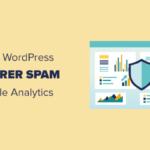In digital marketing, it’s so easy (and tempting) to separate the various sub-disciplines into their little worlds.
Here’s SEO over here, the big one.
Then there’s social media marketing, and over here are PPC ads.
But that’s a black-and-white view of things.
In this case, I want to talk about the intersection of PPC and great content.
If that statement doesn’t even make sense to you, then this post is for you.
Content and PPC data can complement each other in more than one way.
From landing page copy to CPC data to improving click-through rates, there are lots of points where these two digital marketing strata come together to form a stronger whole.
And if we assume that you want to improve both your PPC performance and content traffic, then you can get something out of this.
So, read on for helpful tips on using your content and PPC campaigns in tandem!
1. Use PPC Ads To Get Traffic FAST
The problem with organic search strategies is that it’s nearly impossible to drive eyeballs to your website without an established audience.
Consider that more than 6 million blog posts are published every day, making it nearly impossible for your blog posts to receive exposure without an underlying strategy.
Leveraging PPC ads to drive traffic to your website in the early stages of development will give your brand some exposure and early revenue.
Best of all, traffic derived from paid clicks will represent a large share of the target audience you’re already seeking to sell your brand.
It’s like killing two birds with one stone.
Using Google Ads and Facebook Audience Insights, you can derive more significant insights from your audience while, in turn, reaching them to gather brand exposure.
Slapping on a piece of detailed or informative content can help to differentiate your brand from other advertisers further.
Good, quality content goes more hand-in-hand with PPC than you might think, so be sure to read up on the intersection of these two areas of digital marketing.
The idea is to focus on both campaigns simultaneously and target similar keywords.
Content can be used to inform, while paid advertising should be your tool to convert.
This strategy can help your brand become top-of-mind whenever you appear in the search results for any keyword query.
2. Use PPC Ads To Bias People Toward Your Brand
Contrary to popular belief, paid ads help (indirectly) drive traffic to organic Google results because they raise brand awareness in the users’ minds.
This is because people who view paid ads are more likely to remember your brand when conducting a future search, even if subconsciously.
This could hypothetically make your brand appear more authoritative, as well, or larger than life.
Brand affinity dramatically increases the CTR of repeat visitors as well.
Research has shown that it’s cheaper to keep an existing customer than acquire a new one.
3. Deliver An Awesome Landing Page Experience
Even the savviest paid media manager sometimes runs into difficulty creating a landing page that satisfies the clients and their vision.
Content marketers are naturally great storytellers and creative in their own respect.
Leverage your creative content to craft a unique landing page experience that nurtures inbound leads through your conversion funnel.
Visitors who click on ads are likely to investigate your website before making a conversion.
Consider the buyer’s journey and how content applies across this process:
- Awareness: A customer is alerted to a particular need or problem (blog posts, curated content, infographics, videos, articles).
- Consideration: A customer realizes a particular need and researches it (white papers, testimonials, reviews, landing pages, ebooks).
- Decision: A customer decides to make a purchase or conversion (tutorials, trials, product demos).
Consider providing testimonials, user reviews, and links to relevant articles aside from landing page content for visitors to read before purchasing.
Not all visitors who click on an ad will purchase during that session or even that day.
Providing relevant and quality content on your site will become a valuable touchpoint on your attribution path to generate conversions.
4. Find Content Insights From PPC Keyword Data
If there’s one feature your SEO and PPC campaign already share, it’s keywords.
Leverage your PPC keyword data to discover which keywords drive the highest traffic and revenue.
You can also analyze ad copy performing well and apply it to your organic content campaign.
Consider using commercial intent keywords in your content to promote your services/products to customers.
Branded keywords are incredibly successful and have a much higher CTR than other standard keywords.
Group your keyword strategy and transfer the success of one campaign to the other.
Conduct A/B testing to decipher which keywords operate the best within each campaign.
5. Steal As Much SERP Real Estate As Possible
Naturally, having two links on the same page would increase website clicks.
Aside from increasing click-through rates on both listings, having extra links increases brand exposure and authority in the eyes of the searcher.
While it’s true that 53% of website traffic comes from organic results, PPC ads continue to go strong in the Google of today.
Now, if only you could get a rich snippet, too!
Actionable Tactics To Increase Content Marketing ROI Through PPC Campaigns
Now that you understand the benefits of combining PPC and content marketing, here are some ways to maximize this fully.
1. Promote Your Great Content With Facebook Ads
Use Facebook’s Audience Insights to segment your audience and target ads to new audience members relevant to your vertical.
Promote your best-performing content by boosting your Facebook post to target specific audience groups.
Boost your Facebook post promotes content and ads to two audiences:
- “People who like your Page and their friends.”
- “People you choose through targeting.”
Use PPC ads to build an audience for your content and then utilize “boost post” to reach more people who may be interested in your content.
Facebook Audience Insights and Twitter’s Tailored Audiences provide unique remarketing tools for any PPC ad or promotional content.
Leverage your PPC spend to build an audience for your brand and target them with different ad campaigns based on your most shared and liked content.
2. Write Irresistibly Clickable Headlines
Use BuzzSumo to discover content that’s currently viral in your industry.
Leverage these keywords and topics to create a compelling and relevant headline for your ad display.
This will entice users to engage with your ad display who typically don’t engage with click advertisements.
Conduct A/B testing on different headlines that target different niche keywords to see which ones produce the most clicks and conversions.
Note that clickable does not equal clickbait. It’s still essential to the user experience to craft headlines that are relevant to the content itself.
3. Think Mobile-First
Use images, infographics, and any form of visual content to increase your mobile conversion rate for paid ads.
The rules for landing page content are different for mobile. It’s paramount that you enable responsive design and optimize content for mobile.
Some tips:
- Write short headlines.
- Use concise paragraphs.
- Avoid pop-ups.
- Use small image sizes.
- Include a clear call to action.
4. Craft Killer CTAs To Convert More Visitors
You should present a clear call to action on your landing page, especially for paid promotion articles.
You could accomplish this with a form field on the side or a pop-up CTA. This will help transform leads into conversions for your paid promotion campaign.
People still debate whether to place a CTA above the fold or at the end of the content.
In terms of paid promotion, I’d suggest using your content to hook reader interest and then throwing your CTA at the end of the landing page for more conversions.
Conclusion
I’ll say again: I understand that content marketing and PPC seem like they couldn’t be more different.
They do run parallel a lot of the time, and the common areas can be hard to see.
But if you integrate proper content marketing into your PPC and PPC data into your content marketing and SEO, you can learn a lot and start to bump up your site’s performance overall.
More Resources:
Featured Image: Dean Drobot/Shutterstock
window.addEventListener( ‘load’, function() {
setTimeout(function(){ striggerEvent( ‘load2’ ); }, 2000);
});
window.addEventListener( ‘load2’, function() {
if( sopp != ‘yes’ && addtl_consent != ‘1~’ ){
!function(f,b,e,v,n,t,s)
{if(f.fbq)return;n=f.fbq=function(){n.callMethod?
n.callMethod.apply(n,arguments):n.queue.push(arguments)};
if(!f._fbq)f._fbq=n;n.push=n;n.loaded=!0;n.version=’2.0′;
n.queue=[];t=b.createElement(e);t.async=!0;
t.src=v;s=b.getElementsByTagName(e)[0];
s.parentNode.insertBefore(t,s)}(window,document,’script’,
‘https://connect.facebook.net/en_US/fbevents.js’);
if( typeof sopp !== “undefined” && sopp === ‘yes’ ){
fbq(‘dataProcessingOptions’, [‘LDU’], 1, 1000);
}else{
fbq(‘dataProcessingOptions’, []);
}
fbq(‘init’, ‘1321385257908563’);
fbq(‘track’, ‘PageView’);
fbq(‘trackSingle’, ‘1321385257908563’, ‘ViewContent’, {
content_name: ‘combine-content-marketing-ppc’,
content_category: ‘marketing seo’
});
}
});


